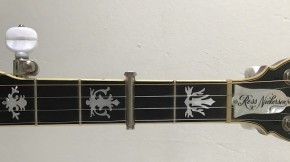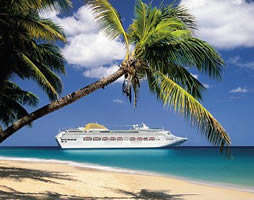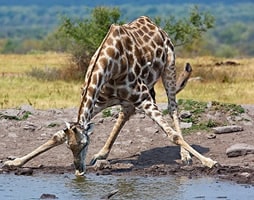Banjo Capo Advice - How and When to Use a Banjo Capo
The banjo or guitar capo is sometimes called a “cheater.” In a sense it is, but it doesn’t make you a poor musician to use it. In fact, in bluegrass banjo playing, many times it is proper. By using the capo, we are able to play everything we know in open G tuning; by simply placing the capo on another fret, we change the key. For those of you who are new to this, I made a little chart to help you at the bottom of the page.
I do not recommend using the capo above the fifth fret because you are cutting off to many of the lower rich sounding notes. I recommend playing in the key of D, (out of open G tuning) without a capo, it has a great tone with many applications and you still have the two open D strings. Also, playing in the key of C (out of G tuning) or in C tuning I feel is a preferable technique over using a capo for the key of C. To play in C with a capo means the capo goes all the way to the 5th fret and you lose a lot of the lower fatter notes that way.
One of the things we should consider when determining whether to use a capo or not is open strings. In most cases, the more open strings we have to work with the better. That is why, in many instances for the best sound for bluegrass songs in keys other than G, it is best to use a capo. This holds true for the right reason.... “it sounds better” ....and even supersedes having the technical knowledge and ability to play every note of a song in Bb, for instance, without a capo.
Let me cut to it and give you some practical advice for when and when not to use a capo, along with some practical advice on studying their use and playing in other keys.
When playing up-tempo traditional style bluegrass in the keys of A, Bb, and B, I recommend using a capo. In other types of songs in these keys, it could be appropriate and preferable not to use a capo, depending on the sound or feel you desire, but, generally speaking, in bluegrass you would use one.
When playing songs in the keys of G, C, D, or F at any tempo, I recommend playing out of open G.
When playing in the key of E, I normally don’t use a capo but tune my fifth string to high B or F#. However, capoing to the 2nd fret and playing as if you were in the key of D (in G tuning) can often produce the sound you want too.
Again, producing the sound you want should be the priority and a determining factor in capo use, not ego on how smart you are for not using one. I will admit I wish I never had to use one. They make tuning more complicated. I played electric guitar in a band for awhile and I tuned once or twice a night. Using the capo will create tuning havoc if you let it. Next are some tips on types of capos and tuning when using a capo.
Types of Capos and Tips on Using Them
I began playing in the days of the “Bill Russell Double Action” capo that used stretched elastic. They were a pain and could really pull the strings out of tune if you weren’t careful. The type of capos that are used today are the ones that allow you to adjust the tightness of the capo against the strings. This is important because tightening the capo too much will cause the strings to go sharp, and, of course, not enough pressure will cause the strings not to ring fully. I recommend placing the capo close up against the fret and tightening just enough for the strings to sound clearly.
A good way to attach the capo is to push the capo bar against the strings straight on (being careful not to push or bend the strings) and hold it there with your right thumb while you tighten the screw with the left hand. After you have the capo in place, get out your tuner and see where the strings ended up. If you’re lucky, you’ll still be in tune. More likely, however, you will need to make a small adjustment or two.
Take note of what happened to each string and write it down so next time you’ll know what to expect. If a string or two went sharp, before you start turning pegs, push on the string up near and in front of the bridge and see if that straightens it out. Many times that will push the string back where it belongs.
The trick here is to learn how your banjo tuning reacts with a capo at each fret. Take the time to practice and study how to tune quickly and effectively with a capo. If you learn good capo placing and tuning technique, you’ll have a much more enjoyable experience at the gig or jam without the hassles of tuning or, even worse, playing out of tune.
Capoing the Fifth String
Your banjo should be equipped with spikes to put the fifth string into in order to raise the pitch of the fifth string since the capo will not be covering it. These spikes were introduced by some genius. They are actually railroad spikes from small HO hobby train sets. They work great and have made the sliding capos from my era obsolete.
You will likely have to fine tune the string after sliding it under the spike. The best way to quickly tune is to drop the string flat at least a half-step and bring it back up slowly and steadily until you reach the correct pitch. No complaint with these spikes! The old-timers must have re-tuned the string every time they used a capo and probably broke a few in the process too.
|
Key of A |
Key of Bb |
Key of B |
Key of C |
Key of D |
|
Capo 2nd fret |
Capo 3rd fret |
Capo 4th fret |
Capo 5th fret |
Capo 7nd fret |
|
5th string 7th |
5th string 8th |
5th string 9th |
5th string 10th |
5th string 12th |
|
Key of C |
Key of D |
|
|
Play out of Open G |
Play out of Open G |
|
|
or |
5th string open |
|
|
Capo 5th fret |
or |
|
|
5th string at 10th |
5th string 7th |
|
|
Open G preferred over capo 5th fret |
Open G for the key of D is normally much preferred over capo at 2nd or 7th fret |
|
|
|
|
|
|
Key of Eb |
Key of E |
Key of F |
|
Capo 3rd fret |
Play out of Open G |
Play out of Open G with 5th string open or on 7th fret |
|
5th string 8th |
or |
or |
|
or |
Capo 2nd fret |
Capo 3rd fret |
|
5th string on 10th |
With 5th string 7th or 9th |
5th string on 8th or 10th |









Th**** ****er 12/10/2017
Thanks Ross for sharing capos - have you addressed mutes in a previous article? I would like to see what you prefer or suggest. I love the sound of my banjo muted. Sounds like a dobro. Real sweet and mellow.Br*** **ok 12/10/2017
What are your thoughts on a shubb or banjo highway 5th string capo....I like mine but keep losing it!